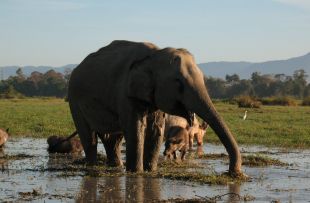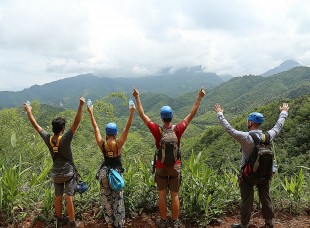The province of Champasak is home to one of Asia’s least visited but greatest temples, Wat Phou. Believed to have been built in the 6th century as a tribute to the Hindu god Shiva, it has also been said by some scholars to have been the blueprint for Angkor Wat and other temples in modern-day Cambodia. Wat Phou, although small in comparison with its counterparts in Cambodia, more than delivers as the elaborate shiva-lingam sanctuary, mysterious crocodile stone and overgrown feel all add to the spiritual and mystical atmosphere. The energetic may walk up the hill to the upper platform where you will be afforded wonderful views of the Mekong River plain. There are dozens of other lesser temple sites dotted about the area including the fascinating Wat Oum Muong located just across the Mekong River. The whole area was given UNESCO World Heritage status in 2001.
On the confluence of the Mekong and the Sedone River, Pakse is the most important city in Southern Laos. This small city has a mixture of Chinese and French architecture and some lively markets. Champassak itself was once the seat of royalty but is now merely a slumbering backwater that has lost any sense of purpose, making it a relaxing and delightful borough to explore at leisure.
Just an hour by road from the town of Pakse, at an altitude of just over 600 meters above sea level and set amongst coffee, tea and cardamom plantations, you will find the lush and picturesque Bolaven Plateau. Besides the plantations, the area is also scattered with interesting ethnic villages, including Alak, Katou, Ta-Oy and Suk minorities where they still practice animist and shamanic beliefs as well as many waterfalls and verdant jungle. It offers the visitor a great insight into rural life in this remote, unspoilt corner of Asia. The area offers the traveler a unique insight into an often-ignored part of the country. Besides exploring the local villages we can arrange treks and elephant rides into the surrounding jungle. Accommodation on the plateau is limited but there are a number of bungalows at the nearby Tad Lo waterfall.



























